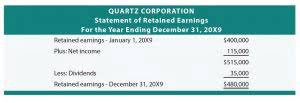
These costs are also known as overhead expenses and include things like utilities, rent, and insurance. Indirect costs are typically allocated to products or services based on some measure of activity, such as the number of units produced or the number of direct labor hours required to produce the product. You can calculate a cost per Insurance Accounting unit by taking the total product costs / total units PRODUCED. Yes, you will calculate a fixed overhead cost per unit as well even though we know fixed costs do not change in total but they do change per unit.

Understanding Absorption Costing

The main disadvantage of absorption costing is that it can inflate a company’s profitability during a given accounting period, as all fixed costs are not deducted from revenues unless all of the company’s manufactured products are sold. Additionally, it is not helpful for analysis designed to improve operational and financial efficiency or for comparing product lines. The main idea and intention behind using such a absorption costing method for costing purpose is to imply that a product, when produced, absorbs both fixed and variable cost up to a certain extent. It does not depend on the fact that the unit of the product has been sold or it is still lying in the storage as inventory or finished product ready to be sold.

Absorption Costing Formula:
- This method of costing is essential as per the accounting standards to produce an inventory valuation captured in an organization’s balance sheet.
- Absorption costing is normally used in the production industry here it helps the company to calculate the cost of products so that they could better calculate the price as well as control the costs of products.
- In these cases, the company may use absorption costing to understand the full cost of producing the product and to determine whether the product is generating sufficient profits to justify its continued production.
- Further, the application of AC in the production of additional units eventually adds to the company’s bottom line in terms of profit since the additional units would not cost the company an additional fixed cost.
- It is sometimes called the full costing method because it includes all costs to get a cost unit.
We will use the UNITS SOLDon the income statement (and not units produced) to determinesales, cost of goods sold and any other variable period costs. The absorption approach considers the cost of the product, the cost of material, labor cost and indirect factory costs; both fixed and variable. Variable costs are considered those costs that vary in the same proportion as the level fixed assets of production or sale. Inventory is evaluated based on manufacturing costs (fixed and variable) and then converted into expenses in the form of manufacturing cost of items sold at the time of sale. Fixed manufacturing overhead costs are indirect costs and they are absorbed based on the cost driver.

Advantages and Disadvantages of Absorption Costing
Remember, total variable costs change proportionately with changes in total activity, while fixed costs do not change as activity levels change. These variable manufacturing costs are usually made up of direct materials, variable manufacturing overhead, and direct labor. The product costs (or cost absorption costing of goods sold) would include direct materials, direct labor and overhead. Absorption costing, alsocalled full costing, is what you are used to under GenerallyAccepted Accounting Principles. Under absorption costing, companiestreat all manufacturing costs, including both fixed and variablemanufacturing costs, as product costs.
Absorption Costing Vs Variable Costing

When we prepare the income statement, we will use the multi-step income statement format. The main advantage of absorption costing is that it complies with generally accepted accounting principles (GAAP), which are required by the Internal Revenue Service (IRS). Furthermore, it takes into account all of the costs of production (including fixed costs), not just the direct costs, and more accurately tracks profit during an accounting period. You can calculate a cost per unit by taking thetotal product costs / total units PRODUCED. Yes, you will calculatea fixed overhead cost per unit as well even though we know fixedcosts do not change in total but they do change per unit.

